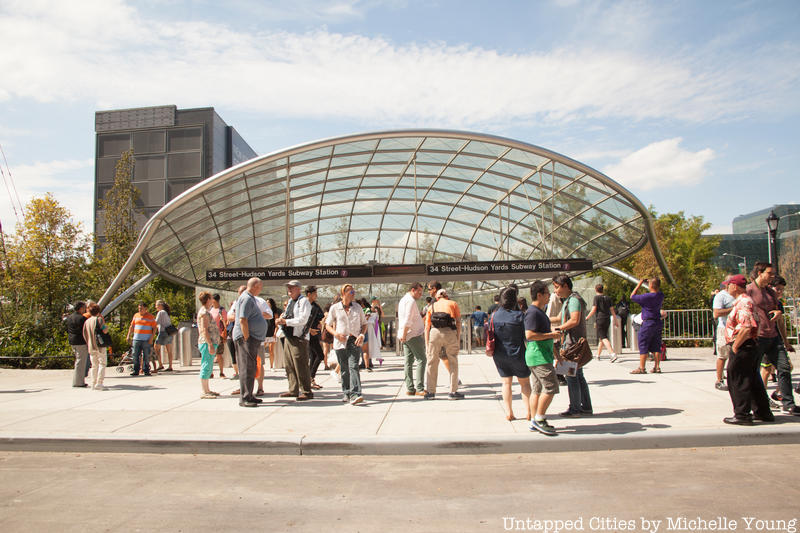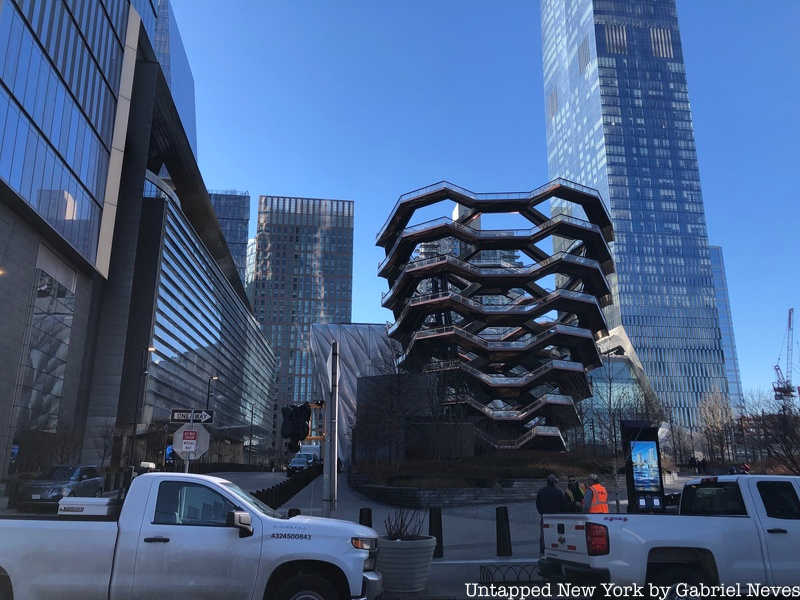34th Street-Hudson Yards

The IRT Flushing Line begins its journey at its westernmost terminal on the route in the newly developed neighborhood of Hudson Yards. The main entrance to the station sends riders down an incredibly steep escalator ride 125 feet below street level. The station opened in 2015, but was postponed a number of times because of complications with assembling and constructing the elevator and escalator systems in the station.
The initial goal of the whole project at 34th Street-Hudson Yards was to create a state-of-the-art station for passengers traveling to the previously planned West Side Stadium. New York City placed a bid to host the 2012 Summer Olympics, but the games ended up in London. The proposed 85,000-seat arena never actually broke ground, as major companies and collaborators involved in the deal believed it wouldn’t be logical to place such a stadium so close to Madison Square Garden. What came about after these disagreements would end up being one of the most extensive rezoning projects in the entire city,
The name of the mega-development project comes from the actual rail yard used by the MTA for storing Long Island Rail Road train cars. The West Side Yard was originally used as a depot for trains that ran down the Eleventh Avenue line back in the 1970s. The yard was renovated in 1987 to serve nearby Penn Station and increase its rush-hour capacity. Train operators previously would be required to move trains to yards located on Long Island, which proved time-consuming and illogical.
The area between 30th and 41st Streets, and between 8th and 12th Avenues, has seen a multitude of high-rise apartment buildings, shopping centers, tourist sites, and parks built in the past few years. Related Companies, the company responsible for the development of Hudson Yards, built a segment of the neighborhood on a large platform placed over the West Side Yard. This installation allowed the MTA to continue using the rail yard underground while facilities such as the Shed, the Vessel, the Shops at Hudson Yards, and 30 Hudson Yards (home to the Edge observation deck) were constructed above it.

Most of the sites located on this platform serve as the primary attraction for shoppers and tourists who come to visit the newly constructed neighborhood. Many elect to visit the Edge, the tallest outdoor observation deck in the entire Western Hemisphere. The High Line can also be accessed via Hudson Yards by walking toward 8th Avenue.
The architects and engineers of Hudson Yards developed a variety of methods to ensure that the neighborhood would be environmentally sustainable. For instance, the city installed a 60,000-gallon tank underneath the streets designed to collect and redistribute rainwater throughout the neighborhood. The addition limits the need to consume more water and focuses on reusing what is available to irrigate parks and cool the mechanical equipment in nearby buildings. The area also utilizes a temperature control system that reduces the emission of carbon dioxide into the atmosphere at an amount equivalent to removing 5,100 cars from the streets.
-Gabriel Neves





